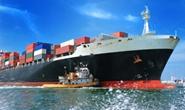Shipping and Logistics

Logistics Round up for October 2015
Written by Sandy Williams
November 1, 2015
Seaborne freight is still experiencing low rates due to limited cargo volume in a general global economic slowdown, according to the latest MID-SHIP Report. Dry bulk market rates have been at historic lows this year as operators struggle with low demand and vessel oversupply.
The Baltic Dry Index stood at 721 on Oct. 30, falling from 888 at the beginning of the month. The BDI is the weighted composite index of the Cape, Panamax and Supra indices. The BDI tracks shipping rates for dry bulk cargos like iron ore, coal and grain and is considered a barometer for global steel trade.
Barges rates for Southbound export grain are trading at 350, down from 450 two weeks ago. U.S. farmers have seen a drop in export demand which is forcing them to store or sell crops to the ethanol market. Northbound freight demand is also slow, with decreases seen in steel sector products, writes MID-SHIP.
Rain from Hurricane Patricia caused high water and flooding in some areas of Texas and Louisiana, disrupting river navigation. The Northeast also was affected with high water levels on the Ohio River that, although causing delays, could be a boon to low water conditions on the Lower Mississippi.
DAT Trendlines reports flatbed load availability fell 7.3 percent on the spot market during the week ending Oct. 24. Load to truck ratio fell from 10.3 to 9.2 loads per truck although the national average rate of $2.00 per mile held steady. Diesel fuel prices averaged $2.498 per gallon as of Oct. 26, down $0.033 from the previous week.
The trucking industry praised the House Transportation and Infrastructure Committee for passing a long-term highway bill last week and urged legislators to find the necessary funding.
ATA President and CEO Bill Graves said, ““We’re pleased the Committee’s bill clamps down on the expansion of tolling and establishes a dedicated freight fund – two positive steps not just for trucking, but for consumers, shippers and the economy. In addition, the safety reforms – from making necessary changes to the CSA safety monitoring system to allowing hair testing as part of the DOT testing program, and limited interstate access to younger commercial drivers – included in this bill are also important steps forward for our industry.”
The Transportation Investment Generating Economic Recovery (TIGER) has awarded a $25 million grant to the Indiana, Kansas, Iowa, Kentucky, Michigan, Minnesota, Ohio and Wisconsin Departments of Transportation. The grant will provide funding to help implement a regional truck parking information management system using existing ITS technology on major truck freight routes in eight states. Lack of available safe parking ranked as fifth most critical issue in the 2015 Annual Trucking Industry Survey conducted by the American Transportation Research Institute (ATRI) Parking information will be disseminated through smartphone applications, dynamic road signage, websites, and parking facilities.
The Association of American Railroads reported rail traffic for the week ending Oct. 24 was 553,144 carloads and intermodal units, down 5.6 percent year-over-year. Total carloads for the week ending Oct. 24 were 284,523 carloads, down 7.4 percent compared with the same week in 2014, while U.S. weekly intermodal volume was 268,621 containers and trailers, down 3.7 percent compared to 2014.
AAR praised the passage of HR 3819 that will extend the deadline for completing implementation of Positive Train Control. The original deadline was Dec. 31 for implementation of the GPS-based system that tracks train movement and automatically slows or stops them from entering dangerous situations. The bill extends the deadline for two years so that the rail industry can continue to test and install the system. AAR says freight railroads have spent nearly $6 billion on the program and expects to spend another $4 billion by time the system is fully operational in the U.S.

Sandy Williams
Read more from Sandy WilliamsLatest in Shipping and Logistics

US Great Lakes iron ore cargoes down notably through May
The Lake Carriers' Association reported a considerable decline in monthly iron ore shipments from US ports on the Great Lakes.

Wittbecker: West Coast port congestion
What's going on in West Coast ports?

Wittbecker: Mexico invests in port capacity despite US tariff troubles
The Mexican government aims to transform Manzanillo into the largest seaport in Latin America, capable of processing some 10 million TEU (20-foot equivalent units) per year by 2030. It is already Mexico's largest port and the third largest in Latin America, handling nearly 4 million 20-foot containers in 2024.

Wittbecker on Aluminum: When do the tariffs reach Main Street?
Containers sailing from China in April are down 15%-20% and Hapag Lloyd says their future bookings transpacific are down 30%.

Wittbecker on Aluminum: US-China trade war clobbers cross-Pacific trade
Container shipping lines have sharply increased blank sailings on Transpacific routes in response to escalating trade tensions between the US and China.
